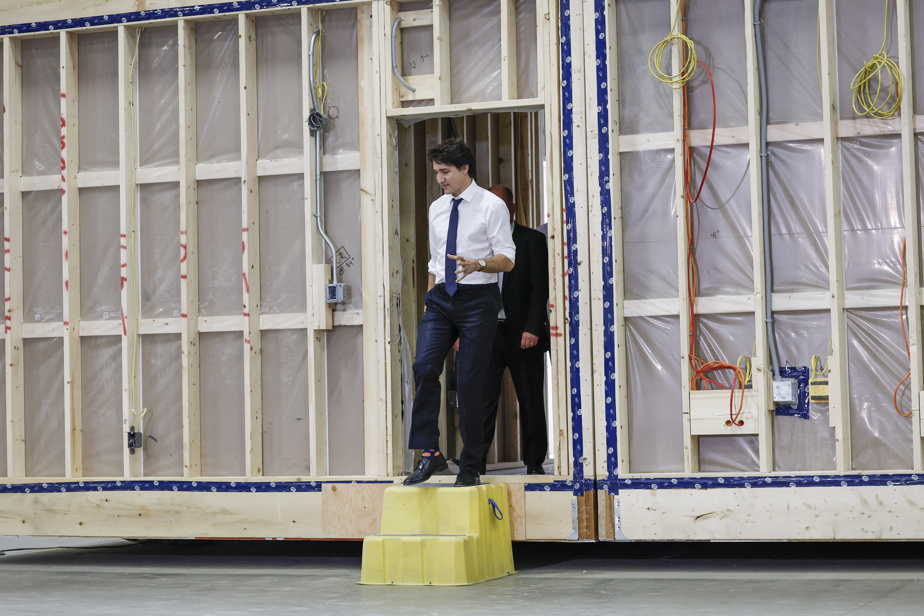The way Canada builds homes hasn’t changed much since the country was founded.
Workers arrive on site with building materials that they assemble piece by piece, much like cars were built until Ford invented the assembly line more than a century ago.
The federal government recognizes that more productive methods are needed, so it is promoting modular construction, in which houses are fully or partially assembled in a factory before being installed on site.
“When I talk about accelerating home construction, modular housing is an important part of that,” Prime Minister Justin Trudeau said in a statement in July.
The process can build homes 20 to 50 percent faster, according to a McKinsey report, while reducing disruption to neighborhoods, reducing waste, requiring fewer workers and being up to 20 percent cheaper.
To accelerate adoption of the practice, the government is setting aside $500 million in loans for companies that use modular construction and other innovative techniques. It is also funding innovative local housing solutions and research to develop new ones, and has committed to reducing regulatory barriers and standardizing designs.
But while some initiatives are underway, industry experts say much more is needed to create a foundation for the construction technique to grow from its meager 2% market share.
“It’s not as simple as, ‘well, somebody just thought of modular homes, so let’s do it,'” said Kevin Lee, executive director of the Canadian Home Builders’ Association (CHBA).
Wider issues in the housing market, such as regulatory delays, development fees and mortgage rules, also need to be addressed for the method to really gain traction, he added.
“There are a lot of obstacles, there are a lot of risks, and that’s why we need all these systemic changes to make sure that investment pays off.”
Z Modular
The case of Z Modular shows that support is increasing, but it is not always sufficient.
Last fall, the company proudly announced that it was the first to obtain insurance from the Canadian Housing Agency for the construction of modular apartments, helping to reduce costs.
However, eight months later, Z Modular announced it was closing its Kitchener, Ontario, plant, losing about 150 jobs, and would instead focus on the U.S. market.
The company said the decision was driven by financing inefficiencies, rising costs and regulatory delays.
“Despite a clear housing crisis, Canada has failed to demonstrate the foresight to enact the changes needed to encourage investment and enable developers to succeed,” Barry Zekelman, president and CEO of Zekelman Industries, parent company of Z Modular, said in a statement in June.
“Unfortunately, despite our investment of tens of millions of dollars, our teammates have become victims of the tragic reality of a broken system,” he said.
Much of the challenge in scaling up modular construction is that it’s expensive to start up a factory and requires consistent demand to pay for all the fixed costs. That doesn’t mesh well with the ups and downs of the Canadian real estate market, Lee said.
“Because of the boom and bust cycle, it’s really difficult to make those investments. […] If you have such high overheads, it can put you out of business.”
The modular industry has been marred by several bankruptcies, ranging from Nomodic Modular Structures, which went bankrupt last fall with half-built social housing projects and millions of dollars in debt, to Nexii Building Solutions, a British Columbia-based company that boasted a valuation of more than $2 billion two years ago before going bankrupt earlier this year.
Not all negative
Other companies are making inroads. Bird Construction bought a modular company in 2017 and last year won a contract to build Canada’s tallest modular project: a 14-storey apartment in Vancouver for the British Columbia Housing Agency.
“Modular construction is gaining significant momentum in North America,” company CEO Teri McKibbon said in a statement at the time.
Alberta-based Northgate Industries, which has been in the business for more than 50 years, has succeeded in part by diversifying its operations, said director Ali Salman. The company builds everything from remote work camps to rural hospitals, and has shipped housing everywhere from Tuktoyaktuk, N.W.T., to Hawaii and South America.
Advances in construction techniques would pave the way for more sustainable building materials and move away from “really outdated methods of building,” said Steven Beites, a professor at Laurentian University’s McEwen School of Architecture.
“We have been building steel frame homes for over 150 years. […] It is critical for us here in Canada to start embracing prefab and modular to achieve these efficiencies.”
